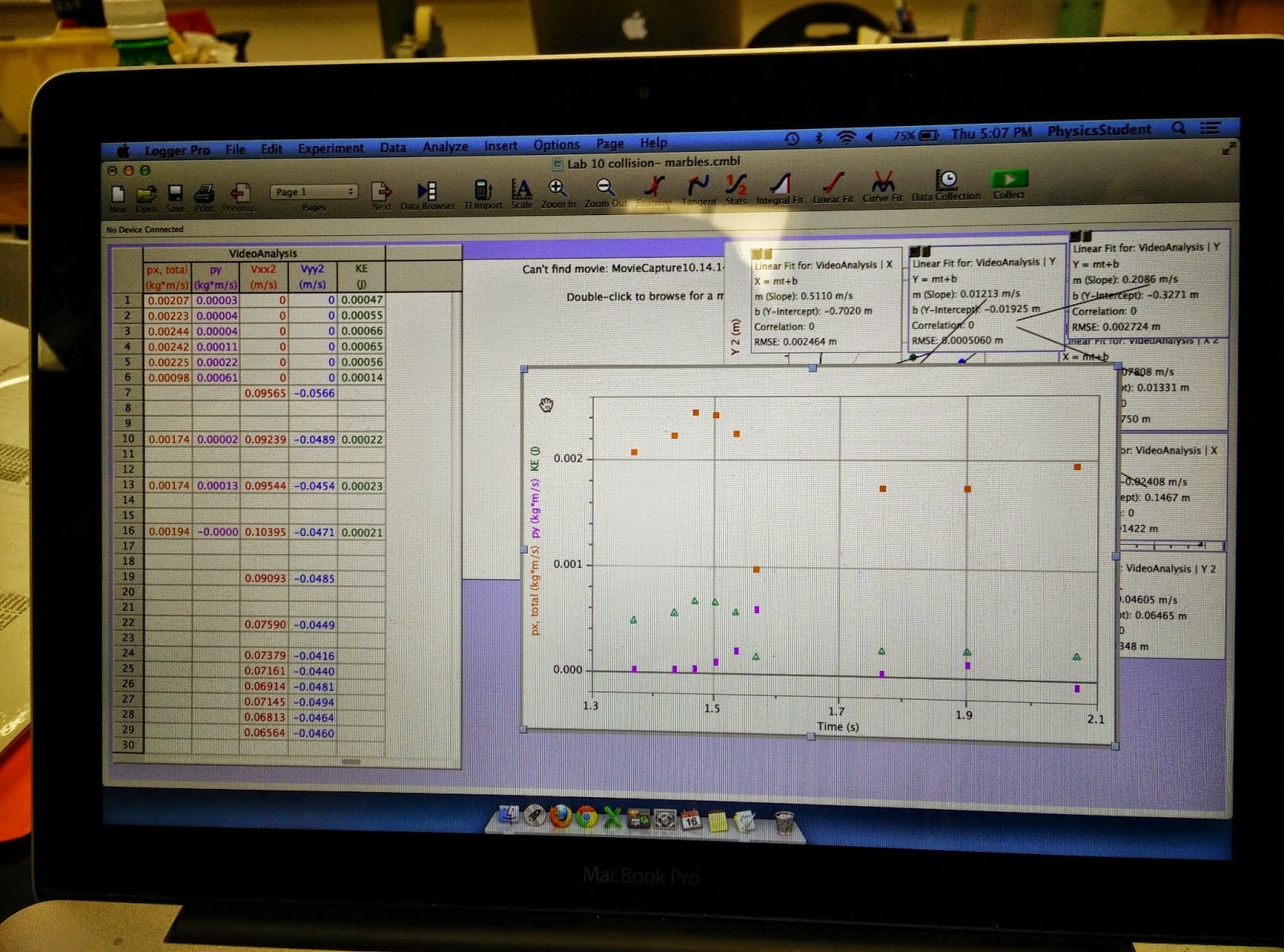In this activity, we were trying to find the moment of inertia of an uniform triangle, and it was being rotated about an axis through its center of mass.
Apparatus and steps:
1.The Pasco rotational sensor was connect to the computer, and we first let it rotate with the smaller topper disk with a hanging mass and no other mass attached to the rotating disk.
The logger pro would record the angular speed and angular acceleration, and they would help us found the moment of inertia of the rotating disk.
2.Then we attached the triangle through its center of mass on the rotating disk, and collect its angular speed and angular acceleration.
3. Finally, we spin the triangle so the longer side of the triangle was horizontal to the ground, and we let it rotate to collect its angular speed and angular acceleration.
Data and analysis:
1.The rotation motion of the pasco rotational sensor without the triangle:
The α(down)=2.278 rad/s^2, α(up)=2.104 rad/s^2
2.The rotation motion of the pasco rotational sensor with the triangle(shorter side at the bottom):
The α(down)=2.102 rad/s^2, α(up)=1.943 rad/s^2
3. The rotation motion of the pasco rotational sensor with the triangle(longer side at the bottom):
The α(down)=1.938 rad/s^2, α(up)=1.735 rad/s^2
The following are the steps to obtain the calculated inertia:
The following are the steps to obtain the theoretical inertia:

















































